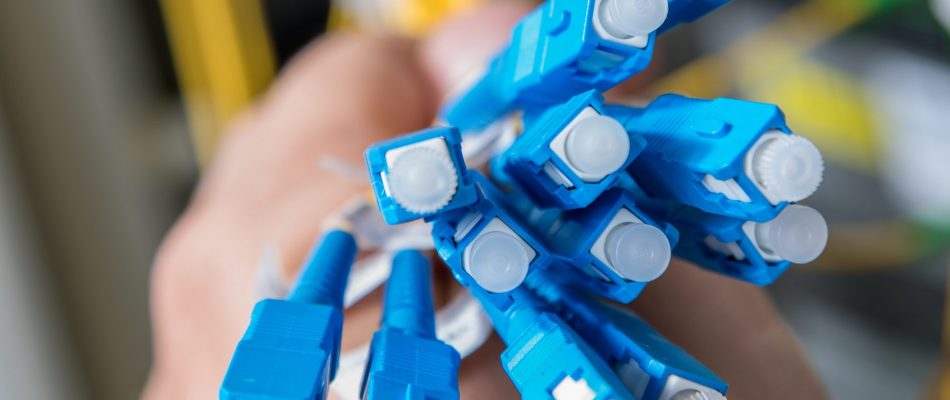Many experts and professionals believe that fiber optics is the future of connectivity. And with immense data transmission speeds, voluminous capacities, low data loss, and little to no interference of fiber optic connectivity, it isn’t hard to see why.
Fiber optics is enabling businesses around the world to exceed gigabit-speed networks and meet modern high-bandwidth demands. It is rapidly becoming the ideal mode of connectivity for homes, businesses, and global technology infrastructures.
All this is made possible thanks to the fiber patch cords that connect and maintain networks indoors and outdoors.
Today, we will discuss a few special fiber patch cords to help you better understand what they are and their applications.
Types of Special Fiber Patch Cords
The increasing global demands of fiber patch cords have led to the mass production of these cables, and you can learn more about some common and popular ones by reading our detailed post “What Are Fiber Patch Cords” here. (It will help you understand the basics of fiber patch cords, their types, and terminology, some of which we will use in this post.)
The same demand has led to the evolution of patch cords to provide more and more bandwidth and some specialty designs to meet various applications. While most people may not need these special fiber patch cords, it is always good to know what options are available.
Here are a few types of special fiber patch cords that are used for particular applications.
Armored Fiber Patch Cords
Armored fiber patch cords do exactly what their name describes. They are typical fiber patch cords but with an added element of “armor” for increased protection. A typical fiber cable has a fiberglass core, cladding, coating, strength member (steel strands/ fiberglass filament/ Kevlar yarn), and the outer jacket.
These layers are in the mentioned order. However, in an armored fiber patch cord, there is an extra layer of stainless armored tube after the coating, and the strength member is made from Kevlar yarn. The armored tubing inside the jacket protects the optical fiber.
It makes the cables strong enough to avoid getting crushed under human feet and prevents rodents from gnawing away at the functional optical fiber layers.
This innovative design makes armored patch cords strong and allows them to be as flexible as a typical fiber patch cord. Therefore, added protection doesn’t cause installation and functionality to be compromised.
Mode Conditioning Fiber Patch Cord
This special fiber patch cord type is a duplex cable with a small portion of single-mode fiber at the start of its data transmission length. The remainder is a multimode cable. This innovative design is made to counter the technical issues caused by using single-mode equipment on an existing multimode system.
It helps improve data transmission quality and increases the travel distance of an existing multimode network beyond its original intended applications. They are commonly utilized in 1/10 gigabit Ethernet applications but can also be used for other network applications if needed.
Bend Insensitive Fiber Patch Cords
The fiberglass core of typical fiber patch cords is quite flexible; however, they are not entirely bendable. All cables have a limited “bend radius,” bending them beyond it can damage the core and cable, often rendering them useless.
Typically, the bend radius is equal to ten times the diameter of the outer jacket. For example, if your fiber patch cord has a 2mm outer jacket, its bend radius is 2mm x 10 = 20mm. Bending it beyond this point will damage the fiberglass core and hinder its performance.
Bend insensitive fiber patch cords are highly resistant to bending and bend-related damages.
They have a much smaller bend radius than typical fiber patch cords, which helps prevent bend loss or damage. The innovative core design and enhanced low macro-bending sensitivity of bend-insensitive fiber patch cords are what make this possible.
Such cables are highly useful in data centers and applications where high-density cabling is required to meet sharp corners and wrap around tight areas.
Uniboot Fiber Patch Cord
Uniboot fiber patch cords are unique because they use special LC uniboot connectors specifically designed for their applications. These cables can integrate two individual fibers inside a single cable, which can be advantageous for applications in areas with a high density of cables, like a data center.
These fiber patch cords take half the space needed by your LC cables in any application. Another type of special uniboot fiber patch cord is known as the switchable uniboot fiber patch cord.
This cord is specifically designed to switch the polarity of the fibers inside by a simple maneuver of the connectors instead of using specialized tools. They offer more efficient cabling solutions because they prevent any cable issues that arise from physically changing connectors.
Low Insertion Loss Fiber Patch Cord
Insertion loss is a common issue with high bandwidth transmissions over longer distances. Low insertion loss fiber patch cords feature lower connector insertion loss compared to common fiber patch cords. However, you will likely not be able to tell these apart from common patch cords just by looking at them.
A typical fiber connector may experience insertion loss of around 0.75dB (decibels), whereas low loss fiber patch cords may only experience 0.2dB or lower. Hence, these special fiber patch cords are crucial for long-distance applications, where reduced attenuation from insertion loss or dB loss is unacceptable.
Conclusion
Fiber patch cords undoubtedly sit at the height of cable technology. They provide large bandwidths, immense data transmission speeds, and many other benefits that increase their global demands with every passing day.
The innovations in fiber technology are constantly improving every aspect of fiber optics, and it won’t be long before they completely take over global network connectivity. While typical fiber patch cords can meet most demands, more complex cabling environments and applications require the mentioned types of special fiber patch cords instead.
Hopefully, our post here has helped you understand their applications better; however, it is always best to seek professional help for real-life applications.
We highly recommend Communications Solutions Inc in Jacksonville for the best fiber patch cords, fiber optic solutions, and overall business network solutions in Florida.
If you want to learn more about the types of special fiber patch cords or the best network and cabling solutions in Jacksonville, Florida, Contact Us Today.



